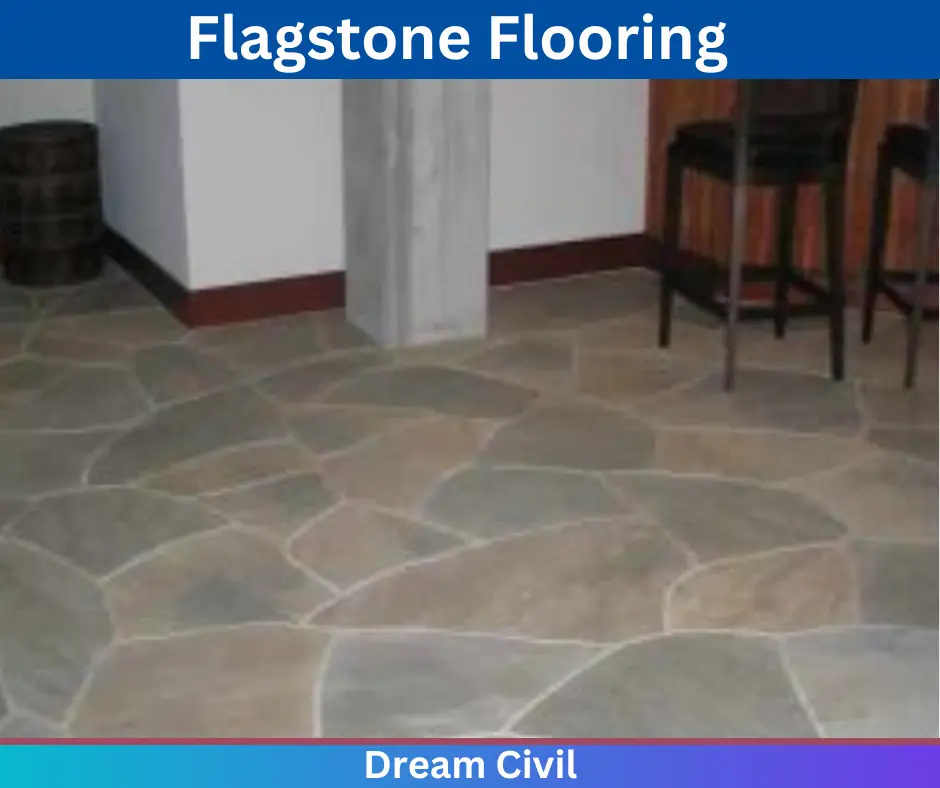Table of Contents
Flag Stone may be defined as a generic flat stone, many times cut in the regular shape of rectangular or square. The flagstones are utilized for paving slabs or walkways, patios, flooring, fences, and roofing. It may also be utilized for memorials, headstones, facades, and other construction. The word comes from Middle English flagge meaning turf, perhaps from Old Norse flaga meaning slab or chip.
1. Flag Stone
Flagstone is a sedimentary rock that is broken into various layers along bedding planes. Flagstone is generally made of sandstone prepared of feldspar and quartz and is arenaceous in grain size (0.16 mm – 2 mm in diameter). The material that combines flagstone is normally made of silica, calcite, or iron oxide. The rock colour generally derives from these cementing materials.
The normal flagstone colours are red, blue, and buff, though exotic colours occur. Flagstone is found in places with bedded sedimentary rocks with fissile bedding planes. The flagstones of different sizes. Nearly the thirteenth century, the ceilings, walls, and floors in European architecture became more famous. Anglo-Saxons in specifically utilized flagstones as flooring materials in the interior rooms of castles and other structures.
Lindisfarne Castle in England and Muchalls Castle (14th century) in Scotland are examples of buildings with surviving flagstone floors. Flagstone is the best roofing material used traditionally and is a type of roof shingle commonly utilized in the Alps, where they are kept dry and usually kept in place with pegs or hooks. In the Aosta Valley, Italy, buildings in historical areas need to be protected with stone shingles.
2. Types of Flagstone
The types of flagstones are as follows:
a. Sandstone
Sandstone is a sedimentary rock formed by layers of sand.

b. Quartzite
Quartzite is a form of metamorphosed rock.

c. Bluestone
Bluestone is a type of blue-grey sandstone but much denser.

d. Slate
A slate is a metamorphic rock layered with clay-like minerals

e. Limestone
Limestone is a common sedimentary rock composed of calcite.

f. Travertine
Travertine is a compacted variety of limestone.

g. Basalt
Basalt is an igneous or volcanic rock.

3. Uses of Flag Stone
The uses of flagstones are as follows:
1. It is used as a roofing material.
2. It is used for the preparation of stone walls.
3. It is used for preparing retaining walls, gabion walls, etc.
4. It is used for the construction of boundary walls.
5. It is used where cheap construction of the wall is needed.
4. Flooring Designs of Flagstone





5. Price of Flagstone
The price of flagstone varies from 35 to 50 per square foot of Indian rupees in India.
The worldwide average cost of flagstone is $15 to $22 per square foot. This price contains the base material, mortar, and workers. The average cost for the flagstone only costs $2 to $6 per square foot.
6. Advantages of Flag Stone
The advantages of flagstone are as follows:
✔ It is slip-resistant.
✔ It resists moisture, and heat, and can bear heavy traffic.
✔ It is versatile.
✔ The installation of the flagstone is easy.
✔ It needs low maintenance.
✔ It can withstand extreme climates.
7. Disadvantages of Flag Stone
The disadvantages of flagstone are as follows:
✔ It is not very fine and smooth.
✔ It is not very impervious as water can percolate through damaged portions.
✔ When iron-tired fellas move over the flagstone floor, it makes a lot of noise.
✔ It is easy to install but consumes a longer time.
| Read Also: Stone walls |

